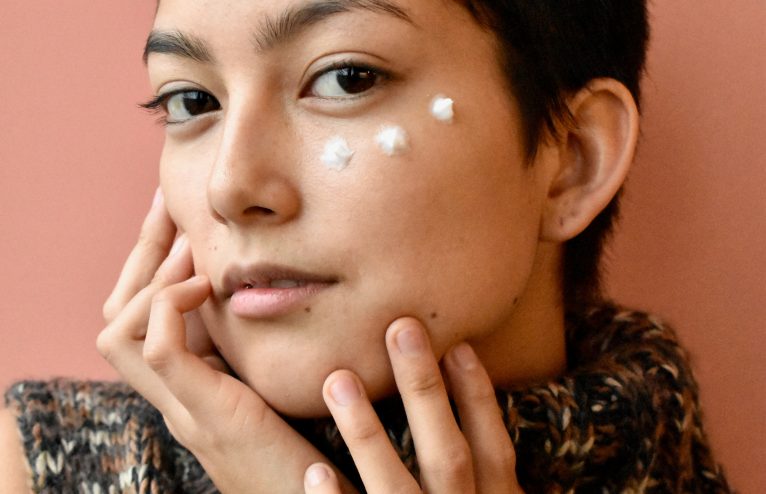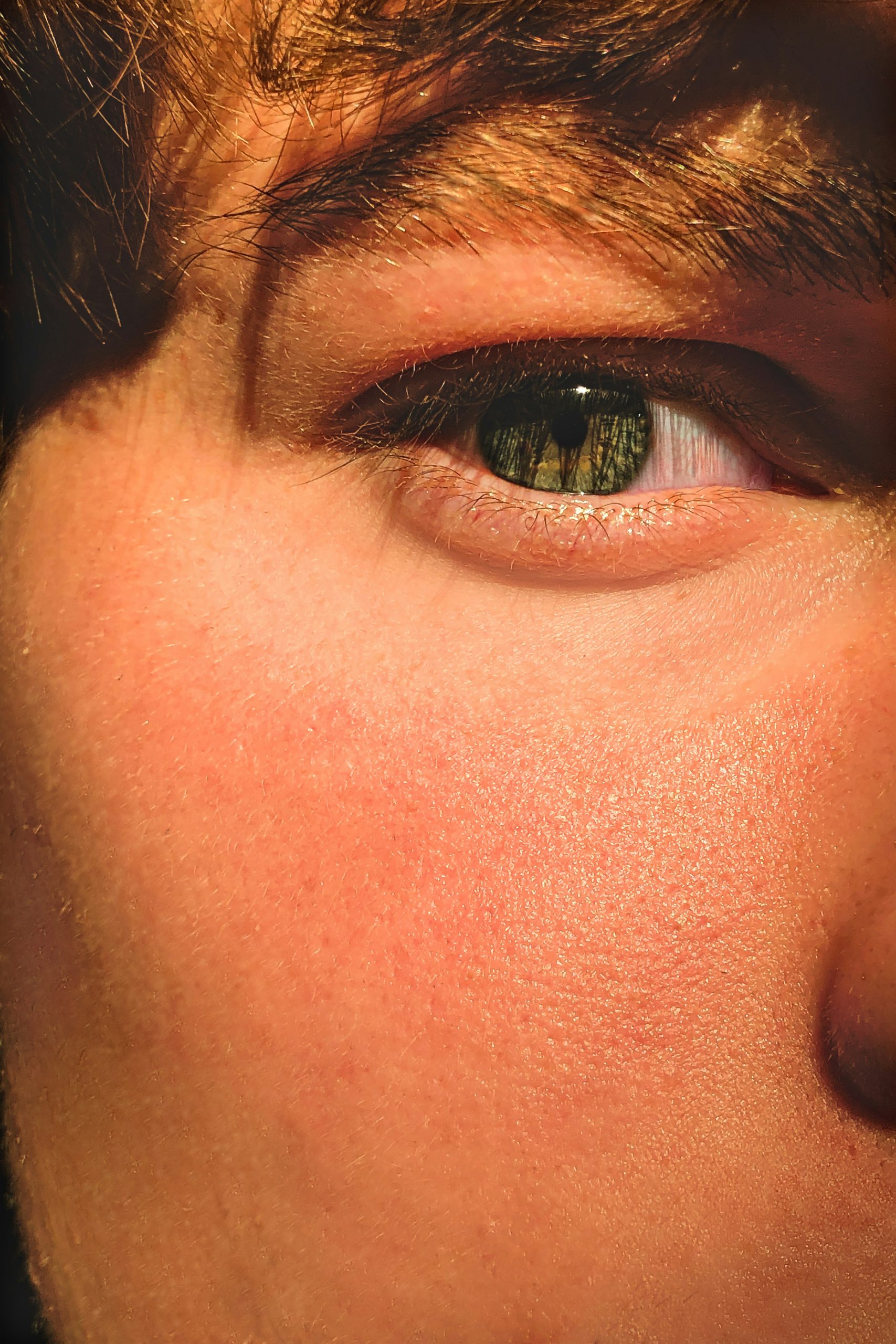Born out of conversations that the Citizen Femme team have in the office, What To Do When is our new beauty and wellness series that focuses on how to deal with beauty questions and mishaps.
Uncovering the ways to deal with various beauty-related scenarios that we’ll probably all experience at some point in our lives, the second in our series is the sometimes tricky situation of starting with retinol for the first time.
The scenario
Retinol is a hero anti-ageing ingredient that promises brilliant line-smoothing and even acne-clearing results. Unfortunately, it is also known for its potential side effects like dryness, peeling and irritation.
Our fashion editor knows that feeling first hand. She recently revealed that she once had chemical burn-like redness and swelling under her eyes after using a very potent retinoid cream over zealously. So, if you’re a little bit daunted by the concept of starting out with retinol or are tempted to start applying lots of the highest percentage formula you can find, here’s everything you need to know…
What is retinol?
Retinol is a form of vitamin A, and despite being used more broadly as a catch-all term, it is actually one of several vitamin A-derived compounds collectively known as retinoids. Retinoids are a class of chemical compounds that play a crucial role in various biological processes. However, within beauty, they are best known for their skincare benefits – mainly their ability to speed up cell turnover to reduce the appearance of wrinkles, hyperpigmentation and blemishes, aka some of our biggest skin concerns.
How exactly retinoids work is a bit complicated but what you need to know is that retinol is a precursor to active forms of vitamin A. When applied to the skin, retinol undergoes conversion into retinaldehyde and then into retinoic acid – the biologically active form that interacts with cellular receptors. “The reason that retinol is so effective is because it’s a cell communicator that can attach to most skin cells and instruct them to behave like younger, healthier versions of themselves,” explains the clinical facials specialist, Kate Kerr. “It is also an antioxidant, so it helps to prevent free radical attack and oxidation in the skin that leads to extrinsic skin ageing.”
What are the side effects you can face with retinol?
That all sounds great, but retinoids are also famous for their side effects. Dryness, redness, peeling and even breakouts are the most common, caused by the ingredient’s encouragement of the sloughing off of old skin cells to reveal the fresh, new cells underneath. This can be pretty normal – you may hear it called retinol ‘purging’ – but if you really overdo it you can experience much more extreme flushing, burning sensations and general discomfort, because your skin’s natural moisture barrier becomes impaired. The latter is avoidable.
At the same time, retinoids can make your skin more sensitive to the sun – in most part due to their aforementioned exfoliation mechanism. Improper use of them can therefore put you at risk not only of sunburn, but, ironically, of the key signs of ageing you are using them to avoid, mainly wrinkling and hyperpigmentation caused by the sun’s UV rays. That’s something that’s really important to bear in mind.
Why is stronger not necessarily better?
While it might be tempting to think that using a stronger concentration of retinol will yield faster and better results, that’s not necessarily the case. In particular, stronger concentrations of retinol can lead to a higher risk of the side effects listed above, especially for anyone with sensitive skin, and, it’s counterintuitive to make your skin actually worse in your quest to address specific skincare concerns. Everyone’s skin is different too, so a retinol that is right for your friend may not be suitable for you (especially if they have a particularly potent one), and it’s important to bear in mind that retinol is most effective when used consistently. That means you want to find a formula you’ll actually continue using, and if you are struggling with lots of peeling and discomfort, that becomes unlikely.
What are the signs that you have ‘overdone it’ with retinol?
Telling the difference between mild side effects from starting retinol and those that indicate you are having a reaction can be a little tricky, but the main thing to bear in mind is the severity and longevity of your symptoms. Persistent or severe redness, especially when teamed with excessive visible dryness or peeling is a classic sign of ‘overdoing it’, as is a considerable burning or stinging sensation. If you notice face puffiness, this could indicate inflammation-caused swelling too.
A disrupted skin moisture barrier is a main side effect of overusing a potent retinol (which explains the dryness), but you may also find that your skin becomes more sensitive to other skincare products as a result of this too. In fact, in severe cases like that experienced by our fashion editor, you may see your skin come up in burn-like patches of redness. Finally, and most annoyingly if you are using retinol to target breakouts, you may find you actually get more blemishes caused by skin irritation if you choose to apply a potent retinol too frequently.
What can you do to avoid side effects?
Luckily, there are a whole host of things you can do to avoid the significant side effects we mentioned above, and it mainly comes down to having a thoughtful, considered approach to using your new favourite product. Ultimately, if you remember just one mantra it should be: slow and steady wins the retinol race.
Start with a lower concentration: One of the most common mistakes is starting with a high concentration of retinol. While 0.1% – 0.3% retinol might not seem like a lot, in the context of retinoids it can be! If you haven’t used retinol before, it’s best to start with a lower strength such as 0.3% to build up your skin’s tolerance, before trying products at a higher strength, such as 1%. This allows your skin to acclimate gradually, reducing the risk of significant irritation.
Take your time and build up: It might be incredibly tempting to dive straight in to using your retinol every day, but that’s a sure-fire way to trigger irritation, especially for first-timers. Instead, you can still get great results by using your chosen product just once or twice a week at first, before gradually increasing the frequency as your skin builds tolerance. This approach can help prevent excessive dryness.
Use a pea-sized amount: As for all skincare products, you should always use your retinoid in the way recommended in the usage instructions. Using more than necessary doesn’t necessarily enhance results and will just increase the risk of irritation. A pea-sized amount tends to be the recommendation.
Apply to dry skin: Applying your skincare to damp skin can facilitate its penetration, and that sounds like a good thing. However, with potent ingredients like retinol, start by using them on dry skin, especially if it’s your first time using them.
Avoid layering with other actives: If you use other active ingredients in your skincare routine, combining them with a high-strength retinoid is an unwanted shortcut to irritation. Ingredients like benzoyl peroxide or vitamin C – both of which have a similar cell turnover effect on the skin – can be the worst offenders, which is why you may want to apply those products in the morning and your retinol in the evening.
Don’t forget your moisturiser: To mitigate the dryness retinoids can cause, make sure you have a nourishing moisturiser on hand to keep your skin hydrated.
Wear sun protection: As mentioned, retinol can increase sensitivity to sunlight, which leaves your skin more prone to sun damage and pigmentation. Always use a broad-spectrum sunscreen with at least SPF 30 during the day to keep your skin suitably protected.
Skip delicate areas: Certain areas of your face are more prone to irritation than others, especially around your eyes, nose and mouth. Consider avoiding these areas to avoid triggering painful sensitivities. If these are your ‘focus’ areas and you don’t want to miss them out entirely, consider a lower concentration of retinol and use one of the growing number of formulas designed for these specific places.
Consider buffering: If you have sensitive skin or have found retinoids too harsh in the past, you can “buffer” your formula by applying a moisturiser before your retinol. This can help reduce the intensity of the retinol’s effects, limiting irritation. It does mean you may have to wait a little longer for results, but they will still come, we promise.
Always patch test: Patch testing is the best way to check whether your skin will react to any product, but especially potent ones like retinoids. Simply take a small amount of the product and apply behind your ear or on your wrist, before popping on a plaster. After 48 hours, check if there’s any redness or other side effects, and if not, you can start applying it to your face.
Consult with a dermatologist: If you have specific skin concerns or conditions, it’s always best to see a dermatologist to discuss what type and concentration of retinoid it is best to use. They may even suggest something much better for you. Plus, if you are still very keen on high-strength formulas, it’s probably wise to see an expert who will be able to supervise your use of prescription-strength retinoids, like tretinoin, ensuring you use them properly and safely.
What can you do if you over do it with retinol?
First and foremost, don’t panic. While your skin is likely to look and feel red and sore, all is not lost. These are the crucial steps to follow to help you soothe, calm and restore your skin after a retinol reaction:
Stop using the product: Taking an immediate break from your retinol is the best way to allow your skin to recover, and to prevent further damage. Even if you only experience very slight side effects, don’t be afraid to reduce how often you are using the product for a little while, to keep your skin in good condition.
Stop using other active ingredients: If you are also using other active ingredients such as a vitamin C serum in the morning, it is wise to cut this out of your routine for a little while to give your skin the best chance of recovering. The same is true for exfoliating acids such as AHAs and BHAs.
Apply a cold compress: If your skin is particularly red or inflamed, you can apply a cold compress to soothe the area. Avoid using ice directly on the skin (this can actually cause more harm than good). Instead, wrap ice in a cloth or use a cool compress.
Keep up with your sun protection: The one product you shouldn’t stop using is your sunscreen. Your skin is likely to be even more sun-sensitive when inflamed and sore, so make sure you are still liberally applying your SPF, even when taking a break from retinoids.
Apply a barrier repair cream: It’s no surprise that the rise in retinoid usage has also seen a rise in the launch of barrier repair creams. These are formulas that are rich in super-nourishing ingredients, such as ceramides, pantheon and niacinamide, which are specifically chosen to help repair your skin barrier.
Apply lots of fragrance-free moisturiser: Slapping on lots of moisturiser will also alleviate any bad peeling and redness in your skin, but make sure it is very gentle and without fragrance to ensure there’s nothing in it that will further irritate your complexion.
Swap your cleanser: A retinol reaction normally indicates a compromised moisture barrier, as discussed, so you don’t want to do anything that might make things worse. Try switching to a mild and gentle cleanser to avoid stripping your skin even more of its natural oils, pat your skin dry instead of rubbing to keep any discomfort at bay, and avoid using hot water on your face as this may lead to dehydration.
When can you start using retinoids again after overdoing it?
The timing for reintroducing retinol depends on the severity of the irritation and how well your skin is recovering. It’s crucial to allow your skin enough time to heal, so make sure all redness, peeling and discomfort has gone before even considering picking up your retinoid again. It is also wise to start with a lower concentration than the product you originally used if possible, and definitely reintroduce it slowly, to allow your skin to build its tolerance back up again over time. You may find, frustratingly, that it takes longer for your skin to ‘adjust’ to a retinol after an initial reaction, but it’s essential to listen to your skin, be patient, and make adjustments to your skincare routine as needed.
If you’ve followed our advice above (we hope you have), you may have supercharged your moisturising routine following your retinol reaction too, and there’s no need to actually stop prioritising this once the initial side effects are calmed down. By continuing to use skin reparative products you can ensure your skin’s natural skin barrier is well-supported, helping maintain healthy skin hydration.
What to shop:
We may earn a commission if you buy something from any affiliate links on our site.

























Any Questions or Tips to add?